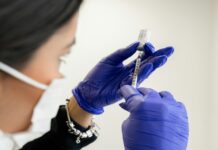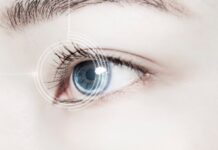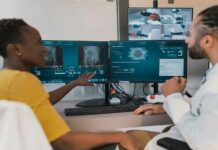The global medical device technologies market, which is valued at around US$400 billion in 2020, is about to witness steady growth over the forecast period. It is anticipated to expand at a CAGR of 4.3% between 2021 and 2028, thereby reaching almost US$530 billion by the end of 2028.
This expansion, which is consistent, goes on to reflect the rising adoption of advanced medical devices when it comes to diagnostics, treatment, and patient monitoring, thereby driven by technological innovation as well as rising demands in healthcare.
As the world happens to navigate the aging population as well as chronic disease burdens, the medical device technologies market is all set to remain the cornerstone of global healthcare all through 2028.
Gauging medical device technologies
Medical device technology has a massive array of tools as well as systems ranging from diagnostic imaging equipment to therapeutic devices as well as wearable monitors. Such technologies enhance the patient outcomes, improve clinical efficiency, and help with minimally invasive processes. This market’s 2020 valuation of around US$400 billion highlights its foundational role, and with the anticipated rise to around US$530 billion by 2028, it underscores its rising importance within the evolving medical needs.
The 4.3% CAGR goes on to indicate a balanced yet dynamic growth trajectory, thereby establishing an equilibrium between products with cutting-edge advancements. Medical devices happen to be integral to modern healthcare, therefore driving sustained market momentum.
Major drivers when it comes to market growth
There are numerous factors that are propelling the medical device technologies market towards a target of $530 billion valuation by 2028. To start with, the aging global population is indeed a primary driver. With the number of people over 65 expected to rise prominently by 2030, age-related conditions, such as diabetes, cardiovascular diseases, and arthritis, are indeed increasing the demand when it comes to devices such as glucose monitors, stents, and even joint implants.
Secondly, the technological innovations are indeed speeding up the growth. Advancements when it comes to artificial intelligence, robotics, and the internet of medical things happen to be transforming the device capacities. Robotic surgical systems better the accuracy, whereas AI-powered diagnostics enhance precision, and the smart variables make sure of real-time health tracking. Such developments sync well with the market’s 4.3% CAGR, hence meeting the need for an effective patient-centric solution.
Lastly, the rising chronic disease issue as well as healthcare spending happen to be boosting the demand for sophisticated devices when it comes to diagnosis as well as management, such as for respiratory disorders and cancer. This trend, bloated by the post-pandemic healthcare prioritization, goes on to throttle the market towards $530 billion.
Market segmentation along with regional insights
The market segments by way of device, type, geography, and end user. Diagnostic devices such as imaging systems and therapeutic devices like dialysis machines lead with in vitro diagnostics as well as variables showing very fast growth. Hospitals go on to dominate the end users because of high device utilization, followed by clinics as well as home care settings in which portable technologies are gaining ground.
When we talk about the region, North America went on to hold a prominent share of $400 billion valuation in 2020, which was driven due to advanced healthcare infrastructure, good regulatory support in the US, and high R&D funding. After this, Europe followed with robust markets like Germany and the UK, bolstered due to universal healthcare systems. However, the Asia Pacific region was poised for the fastest growth through 2028, driven due to an aging demographic, rising healthcare access, and also medical tourism in countries such as China, India, and Japan.
Barriers and opportunities
The global medical device technologies market faced barriers during this period. Strict regulatory requirements like FDA approvals or CE marking went on to delay the product launches, while the high development expenditure strained smaller manufacturers. The supply chain disruption that has been going on since the COVID-19 era affected the device availability, while the cybersecurity risks within the connected devices also raised issues.
All these challenges, however, went on to open certain opportunities too. Companies streamlining the regulatory compliance or coming up with cost-effective devices can gain a competitive advantage, thereby supporting the push to $530 billion. The growth in telemedicine as well as home healthcare has seen a spike in demand for user-friendly, small devices, whereas innovations such as 3-D printed implants along with biodegradable sensors offer a huge potential to exceed projections. Expanding within the emerging markets along with affordable solutions helps to further enhance the growth prospects.
The Path to 2028
By 2028, the global medical device technologies market is expected to reach the projected figure of $530 billion, thereby reflecting the eight years of balanced growth at 4.3% CAGR from $400 billion in 2020. This achievement will be driven due to demographic shifts, breakthroughs within the technological segment, and healthcare investments. As the forecast period concludes, the market trajectory continues to show expansion with the potential for AI as well as customized devices to shape its future growth.
Finally, the medical device technologies market has gone on to demonstrate solid growth from 2020 to now till 2028. Growing from $400 billion to $530 billion. It has to address pressing healthcare needs with a transformative effect. Stakeholders, right from device manufacturers to healthcare providers, are going to play a vital role in the success, thereby ensuring innovative and enhanced patient care with accessible technologies across the world, not only till 2028 but also beyond.
















